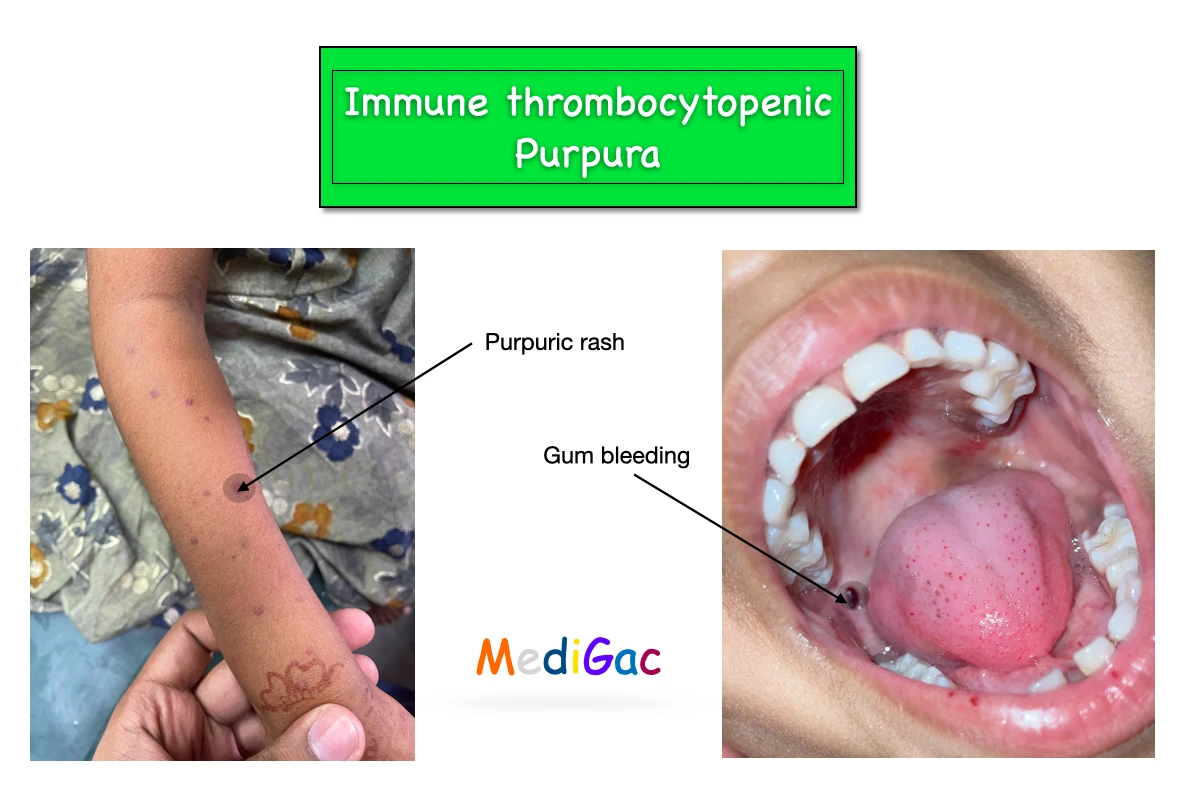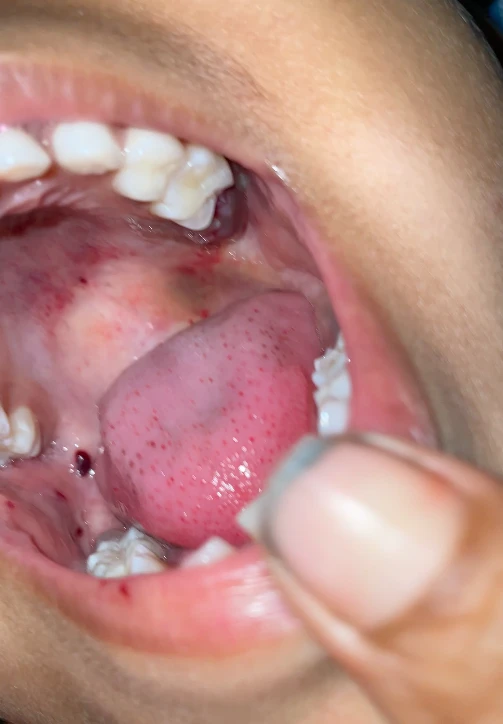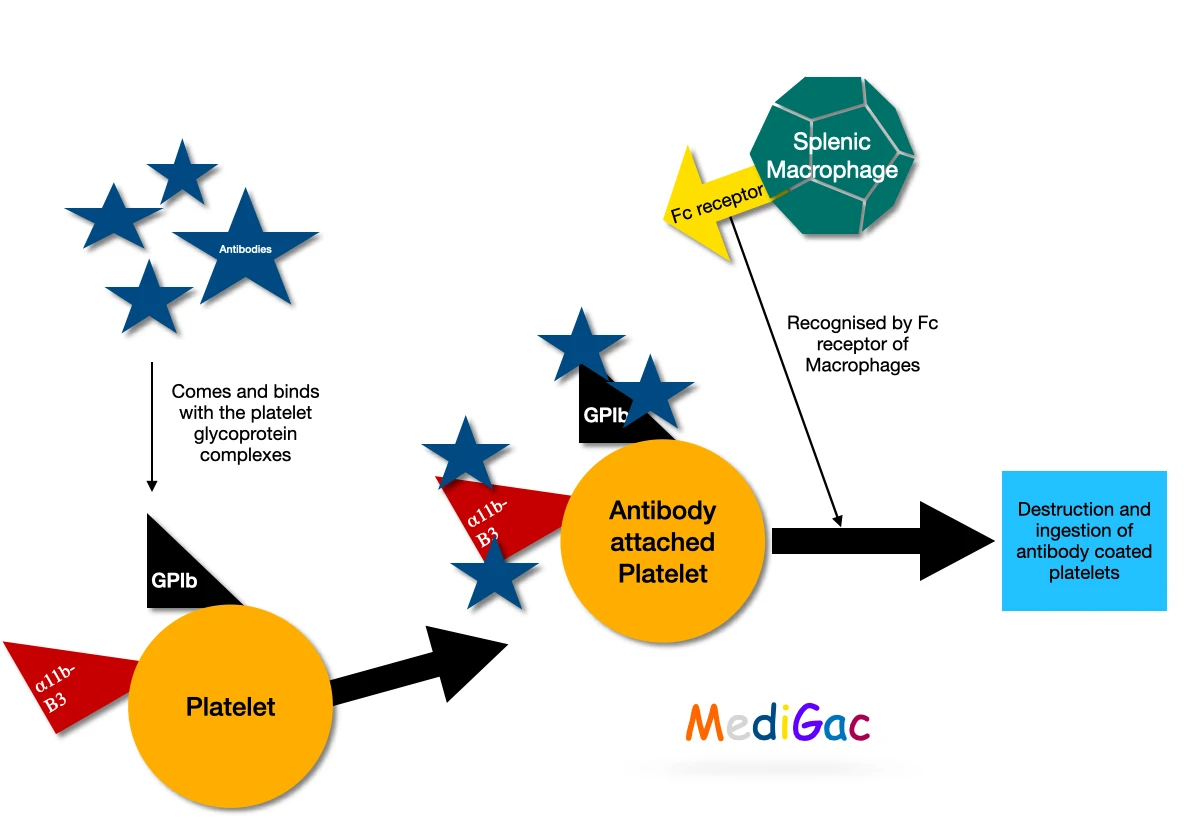
Also known as Idiopathic thrombocytopenic purprua, This is an autoimmune pathology characterized by a low platelet count, purpura, and hemorrhagic episodes caused by antiplatelet autoantibodies.
1. Clinical features :
- Purpuric rash in the body

2. Gum bleeding

3. Other bleeding episodes like menorrhagia, epistaxis, Melena.
2. Pathophysiology :
Mainly the cause is destruction of platelet by body itself.
In chronic ITP, antibodies are formed against platelet glycoprotein complexes like Alpha11b-B3, and GPIb. Now this antibodies starts to bind with the surface of the platelet. Then those coated antibodies are identified by the Fc receptor present on Splenic macrophages. And atlast those platelet are destroyed.

3. Management :
A. Investigations :
Complete blood count :
- Severe thrombocytopenia(Platelet count <20*109/L)
- Haemoglobin will be decreased
Bone marrow examination :
- Normal granulocytes and erythrocytes, but increased numbers of megakaryocytes.
B. Treatment :
- Education and counselling of the family : Patients should be early concious about the symptoms where it is mild, moderate.
- Intravenous immunoglobulin (IVIG) : IVIG is given at a dose of 0.8-1.0g/kg/day for 1-2 days.
- Intravenous anti-D therapy.
- Corticosteroid like Prednisolone is given.